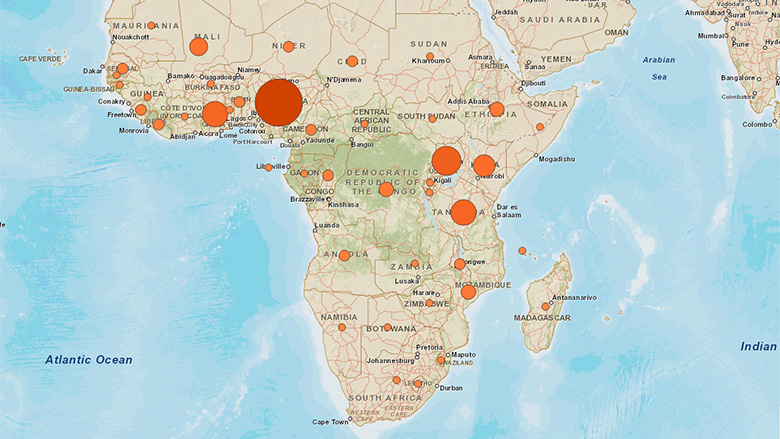Challenge
The Senegal River Basin covers more than 1% of Africa’s land mass and is home to 12 million Africans. Seven months of scorching dry season bring an average of only .1 inches of water per month, creating major agricultural and pastoral challenges. In addition to the water needed for crop irrigation and grass for grazing, fish from the river are an important source of food for local populations. Over the past 30 years, overfishing has depleted the fisheries to near collapse and dams have interrupted the annual river flooding farmers depend on to grow crops. Malaria and the parasitic schistosomiasis, also known as bilharzia or snail fever, have also been an issue in the basin, affecting residents’ ability to work and attend school while increasing maternal and child mortality.
Solution
The project supported regional institutional development for water resources by modernizing the OMVS, enhancing institutional capabilities, rehabilitating the OMVS documentation center, and bringing Guinea into the organization that includes Senegal, Mali, and Mauritania. Local-level multi-purpose water resource development was supported through small hydraulic infrastructure, traditional fishery improvements, water resource planning and management, and reduction of waterborne diseases. Regional master planning across sectors was facilitated through the Comprehensive Master Plan for the Senegal River Basin, pre-investment support for the OMVS Guinea Hydroelectric Project and OMVS multi-purpose dams, and ensuring stakeholder participation in master planning. Holistic efforts to combine support for sustainable fishing and improved access to markets with more traditional water resource development activities such as energy and agriculture were also emphasized. Finally, prevention and control activities targeting malaria and schistosomiasis were implemented, providing mosquito nets to 84% of the children younger than five living in the project area, as well as regular medicine treating schistosomiasis.
Results
From 2006 to 2012, the project achieved the following results:
- 8,445 residents of the Senegal River Basin had directly benefited from the project
- Over 4,400 hectares of land was rehabilitated for agricultural use through irrigation and water management
- Fish stocks in the Senegal River have risen nearly 13%
- Migrants are returning from Dakar to rejoin their local fishing economy
- Over 2.6 million insecticide-treated malaria nets have been distributed
- 84% of children under five in the project area now sleep under a mosquito net, up from 58% at the start of the project
- The prevalence of malaria and schistosomiasis has decreased
- The flow capacity of principal water intakes Laoueja, Gorom Aval, and Dioulol increased from 15 cubic meters to 35 cubic meters, surpassing the target
- In June 2012, 111,598 fish were sold from the main markets and depots rehabilitated under the project
- 88 irrigation canals were rebuilt and rehabilitated in the basin
- The Comprehensive Senegal River Basin Master Plan has been adopted as a planning tool for optimal management and development of water resources.
Bank Group Contribution
The International Development Association has contributed a total of $110 million to the project in the form of an Adaptable Program Loan, making up over 77% of the total project cost of $142.17 million.
Partners
The project works closely with the Senegal River Basin Organization (OMVS), established in 1972 by Mali, Mauritania and Senegal to improve the use of and access to water across national boundaries. The African Development Bank contributed $2 million in financing to the project, the European Commission contributed $1.8 million, the Agence Française de Développement (French Development Agency) contributed $8.32 million and the Netherlands Ministry of Foreign Affairs contributed $6.63 million.
Moving Forward
The OMVS has been strengthened to manage water resources and other disputes regarding the Senegal River Basin that the future may bring. Additionally, the Comprehensive River Basin Master Plan has been adopted as a comprehensive guideline for future water resource management and development strategies.
Beneficiaries
In Senegal’s Sadel, five hours driving northeast from the capital, improved irrigation has enabled the community to grow and sell watermelons, squash, tomatoes, and rice, while the surrounding waters abound with Senegal River Perch. A lifetime resident reflects on the improved fish stocks, “Now there are more fish to feed us and increased incomes.”
